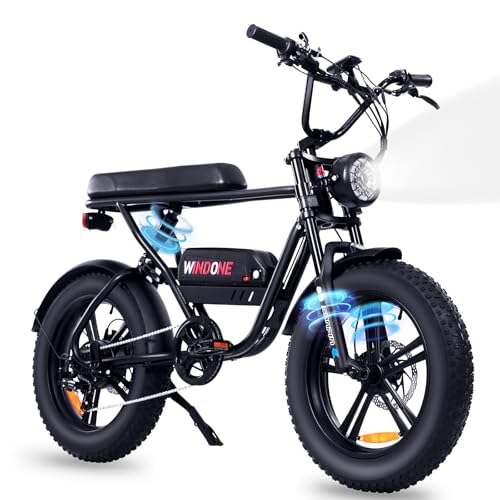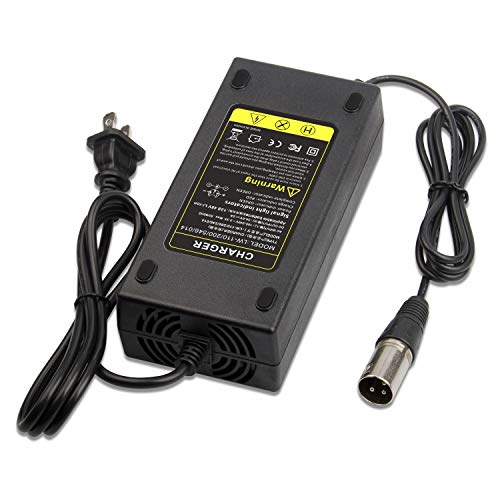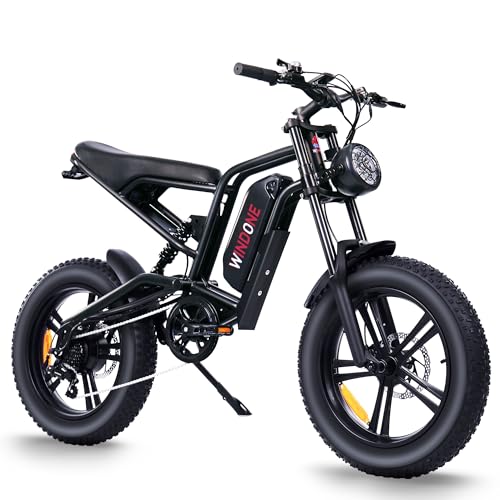To put an electric motor on a rear suspension bike, follow these steps: remove the rear wheel, install a hub motor, connect the motor to the battery, and secure all wiring properly. Do you love riding your bike but wish you could have the added power of an electric motor?
If so, you’re in luck! With a few simple steps, you can easily install an electric motor on your rear suspension bike. By doing so, you’ll be able to effortlessly conquer hills and cover longer distances without breaking a sweat.
So let’s dive right in and explore how you can transform your regular bike into a powerful e-bike. Just follow the step-by-step instructions below, and you’ll be cruising with ease in no time.
Benefits Of An Electric Motor On A Rear Suspension Bike
Discover the numerous benefits of equipping an electric motor on a rear suspension bike. This innovative addition offers increased power and speed, improved uphill performance, and an enhanced overall riding experience. Whether you enjoy off-road adventures, daily commutes, or leisurely rides, an electric motor on a rear suspension bike can take your cycling game to new heights.
Increased Power And Speed
Adding an electric motor to the rear suspension bike significantly boosts its power and speed capabilities. With the electric motor assisting your pedaling efforts, you’ll experience a surge of power that propels you forward with greater ease. Whether you’re tackling challenging terrains or simply looking to cover more ground effortlessly, the increased power and speed provided by the electric motor will have you feeling like a true cycling champion.
Improved Uphill Performance
One of the biggest advantages of an electric motor on a rear suspension bike is the improved uphill performance it offers. Cycling uphill can be a strenuous task that requires considerable effort and energy. However, with the assistance of the electric motor, conquering steep inclines becomes a breeze. The electric motor takes the strain off your legs and provides an extra boost, allowing you to effortlessly ascend hills that once seemed insurmountable.
Enhanced Riding Experience
Beyond the increased power and improved uphill performance, adding an electric motor to a rear suspension bike ensures an enhanced overall riding experience. This means you can enjoy longer rides without feeling fatigued, explore new trails or routes that were previously daunting, and effortlessly maintain a consistent speed even on challenging terrains. The electric motor acts as your reliable companion, enhancing your biking adventure by providing a smooth and enjoyable ride every time.
Choosing The Right Electric Motor
Choosing the right electric motor for your rear suspension bike is essential to ensure optimal performance and a satisfying riding experience. With a wide range of options available in the market, it can be overwhelming to make the right choice. However, by considering your riding needs, evaluating power and torque, and looking at battery capacity, you can successfully narrow down your options and find the perfect electric motor for your bike.
Consider Your Riding Needs
Before diving into the world of electric motors, it is crucial to have a clear understanding of your riding needs. Think about the type of terrain you will be riding on, whether it’s off-road trails, steep hills, or smooth paved roads. This will help you determine the power and torque requirements of the motor.
Evaluate Power And Torque
The power and torque of the electric motor are two key factors that directly impact your bike’s performance. Power, measured in watts, determines how fast and efficiently your bike can accelerate, climb hills, and maintain higher speeds. Torque, on the other hand, measures the force that the motor can apply to the rear wheel, allowing it to conquer various terrains effortlessly.
Higher power and torque are generally ideal for riders who frequently tackle challenging terrains and require more assistance. However, if you plan to use your bike mainly for commuting or leisurely rides, a motor with moderate power and torque may suffice.
Look At Battery Capacity
The battery capacity plays a significant role in determining the range and overall performance of your e-bike. A larger battery capacity allows for longer rides without the need for frequent recharging. Consider your typical ride duration and distance to ensure your electric motor’s battery capacity meets your requirements.
Additionally, it is essential to assess the battery type and weight. Lithium-ion batteries are commonly preferred due to their high energy density, lightweight nature, and longer lifespan. Avoid lead-acid batteries as they are bulkier, less efficient, and have shorter lifespans.
By taking these factors into account and making an informed decision, you can choose the right electric motor for your rear suspension bike. Remember to consider your riding needs, evaluate power and torque, and look at battery capacity to ensure an enhanced riding experience.
Preparing Your Rear Suspension Bike
Putting an electric motor on a rear suspension bike can transform your ordinary ride into an exhilarating adventure. However, before you start the conversion process, it’s important to prepare your bike properly to ensure a successful and safe outcome. This section will guide you through the necessary steps to prepare your rear suspension bike for the electric motor installation.
Selecting A Compatible Frame
Choosing a compatible frame is the first step in preparing your rear suspension bike for an electric motor. Not all frames are suitable for motor installation, so it’s crucial to consider the frame’s material, design, and suspension system. Look for a frame that is sturdy enough to handle the added weight and torque of the motor. Aluminum or steel frames are commonly recommended due to their strength and durability.
Modifying The Rear Suspension System
Modifying the rear suspension system is another essential aspect of preparing your bike. This step ensures that the motor doesn’t interfere with the suspension’s functionality and maintains a balanced ride. Here are a few modifications to consider:
- Adding a Torque Arm: A torque arm is a crucial component that prevents the motor from rotating or twisting the rear suspension. It helps maintain stability and prevents damage to the bike’s frame and the suspension system.
- Adjusting the Suspension Settings: Depending on the motor’s weight and your riding style, you may need to adjust the suspension’s preload, damping, and rebound settings. Consult your bike’s manual or seek professional guidance for optimal suspension settings.
- Ensuring Adequate Clearance: Ensure that there is enough clearance between the motor and the suspension components. This step will prevent any interference with the suspension’s movement and ensure a smooth riding experience.
Ensuring Proper Fit And Alignment
Proper fit and alignment are crucial to ensure the safe operation of your rear suspension bike with an electric motor. Incorrect fit and alignment can lead to inefficiencies, increased wear and tear, and even safety hazards. Here are a few steps to achieve proper fit and alignment:
- Aligning the Motor and Rear Wheel: Ensure that the motor is aligned properly with the rear wheel, maintaining a straight line between the motor sprocket and the rear cassette. Misalignment can result in undesirable effects, such as excessive chain wear or poor power transmission.
- Checking Axle Alignment: Verify the alignment of the rear axle with the motor axle to eliminate any potential drivetrain issues. Misaligned axles can cause chain skipping or other mechanical problems.
- Inspecting Cable Routing: Examine the routing of cables and wires to ensure they don’t interfere with the suspension movement or get damaged during operation. Securely fasten cables using zip ties or clips, keeping them away from any moving parts.
By following these steps and ensuring compatibility, modifying the suspension system, and achieving proper fit and alignment, you will have a well-prepared rear suspension bike ready for the exciting addition of an electric motor. Now, let’s move on to the next step – installing the motor!
Installing The Electric Motor
When it comes to converting a rear suspension bike into an electric bike, one of the essential steps is installing the electric motor. This process requires careful planning and attention to detail. In this section, we will guide you through the steps of mounting the motor and battery, setting up the wiring and connections, and securely securing all the components.
Mounting The Motor And Battery
Mounting the motor and battery is a crucial part of the electric motor installation process. Here’s a step-by-step guide to help you through:
- Start by identifying the optimal location for mounting the motor. It should be positioned in a way that offers a good balance and weight distribution.
- Using the appropriate tools, secure the motor to the designated spot on the frame. Make sure it is tightly fastened, as any looseness can lead to unwanted vibrations and damage.
- Next, find a suitable spot to install the battery pack. Ideally, it should be mounted on the frame close to the motor for easy access and convenient wiring.
- Attach the battery pack securely using mounting brackets or straps, ensuring it is stable and won’t shift during rides.
Wiring And Connection Setup
Once the motor and battery are securely mounted, it’s time to tackle the wiring and connection setup. Follow these steps:
- Begin by carefully routing the wires from the motor to the battery pack, making sure they are neatly organized and away from moving parts that could cause damage.
- Using suitable connectors and wiring harnesses, make the necessary connections between the motor, battery pack, and control unit.
- Double-check all the connections to ensure they are snug and well-insulated, minimizing the risk of short circuits or loose connections.
- If your electric motor kit includes additional features like a throttle or display panel, refer to the manufacturer’s instructions to properly connect and integrate them into the system.
Securing The Components
Securing the components is vital to ensure that they stay in place even during bumpy rides. Here are a few tips:
- Use zip ties or Velcro straps to secure any loose cables or wires, keeping them away from moving parts and reducing the risk of tangling or damage.
- Consider using adhesive-backed cable clips to further organize and secure the wiring along the frame.
- Inspect all mounting points and fasteners regularly to ensure they remain tight and secure, tightening them if necessary.
- Finally, take your bike for a test ride to check for any unusual vibrations or movement. If you notice anything out of the ordinary, stop and reevaluate the installation to ensure everything is properly secured.
By following these steps to install the electric motor on your rear suspension bike, you’ll be well on your way to enjoying the benefits of an electrically powered ride.
Testing And Fine-tuning
Once you have successfully installed an electric motor on your rear suspension bike, it’s time to focus on testing and fine-tuning to ensure optimal functionality and performance. This crucial step will not only help you identify any potential issues but also allow you to adjust the power settings and verify suspension performance for a smooth and exciting ride.
Checking Motor Functionality
Before hitting the road, it is essential to verify the proper functionality of the electric motor. Here’s a simple checklist to help you check the motor’s performance:
- Inspect all connections: Ensure that all the wires and cables are securely connected to the motor, battery, and controller.
- Test the power supply: Double-check the battery charge and make sure it provides sufficient power to the motor.
- Activate the motor: Use the controls to activate the motor and observe if the motor engages smoothly without any unusual noises or vibrations.
- Test different power levels: Test the motor’s response at different power settings to determine if it is functioning as expected. Ensure smooth acceleration and responsive deceleration.
By carefully checking the motor’s functionality, you can ensure a safe and reliable ride.
Adjusting Power Settings
Once you have confirmed the motor’s functionality, you may need to fine-tune the power settings according to your preferences and riding conditions. Here’s how you can adjust the power settings:
- Refer to the manufacturer’s instructions: Check the user manual or online resources provided by the motor manufacturer for guidance on adjusting power settings.
- Connect to a programming device: Some electric motors allow you to connect them to a programming device, which enables you to customize power output and other parameters.
- Consider your terrain and riding style: Determine the power output required based on the type of terrain you will be riding on and your personal riding style. For off-road adventures, you may want more power, while for leisurely rides, a lower power setting may suffice.
- Gradually adjust the power settings: Make small adjustments to the power output and test ride your bike to assess the impact on performance. Keep refining the settings until you find the optimum balance.
Customizing the power settings allows you to maximize your riding experience while ensuring efficiency and control.
Verifying Suspension Performance
Adding an electric motor to a rear suspension bike may affect its suspension performance. It is important to evaluate and verify the suspension performance after the installation:
- Observe the suspension behavior: Ride your bike on different surfaces and terrains to assess how the suspension reacts. Pay attention to any excessive bouncing, bottoming out, or lack of responsiveness.
- Make necessary adjustments: If the suspension performance is not satisfactory, consult the bike’s suspension manual or seek professional assistance to fine-tune the suspension settings and achieve the desired performance.
- Test again: After adjustments, take your bike for another ride and observe if the suspension performance has improved. Repeat the process until you are satisfied with the suspension’s behavior.
By verifying and optimizing the suspension performance, you can enjoy a smoother and more controlled ride while tackling various terrains.
Frequently Asked Questions Of How To Put An Electric Motor On A Rear Suspension Bike
Can You Convert A Full Suspension Mountain Bike To Electric?
Yes, it is possible to convert a full suspension mountain bike to electric.
Can You Add An Electric Motor To A Regular Bike?
Yes, you can add an electric motor to a regular bike. It offers assistance while pedaling, making it easier to ride.
How Do I Convert My Normal Bike To Electric?
To convert your normal bike to electric, follow these steps: 1. Purchase an electric bike conversion kit from a reliable retailer. 2. Remove the existing front or rear wheel and replace it with the electric wheel provided in the kit.
3. Attach the battery pack securely on the bike frame. 4. Connect the motor, throttle, and controller according to the kit’s instructions. 5. Test the system and start enjoying your newly converted electric bike!
How Much Does It Cost To Convert A Bike To Electric?
The cost of converting a bike to electric varies, but it can range from around $500 to $2,000.
Conclusion
Converting a rear suspension bike into an electric one is a game-changer, boosting its power and versatility. By carefully following the steps outlined you can successfully install an electric motor onto your rear suspension bike. Enjoy the benefits of effortless climbing, increased speed, and extended distances.
Embrace the future of biking by combining technology with your passion for cycling. Get ready to experience a whole new level of riding excitement!




Leave a Reply